With over 23 bicycle trails throughout the country, New Zealand is one of the best places in the world to go on a bicycle tour. Moreover, as an island nation covered with towering peaks, the amount of dramatic scenery and stark contrast in climates make for a very interesting and dynamic trip. I'll go through some of the things you'll need to prepare, as well as describe a few of the bicycle trails you can experience.
Getting a Bike
Should you rent a bike or buy with the intention to resell? A lot of that will depend on your length of time travel and your budget. If you're tight on time but willing to part with some cash, renting is absolutely the way to go. It's hassle-free, quick and you can get some really top quality bikes and gear that will solve a lot of headaches before they even start. Only catch is it'll cost you a pretty penny if you are intending to do a very long trip.
Buying and reselling a bike on a website like TradeMe.co.nz will eat away a lot of days, meaning not a good idea if you've only got a couple weeks. If you do this option it may require securing accommodation for a few extra days before or after your trip. But if you are going for several weeks and want to really save, it could be worth it in the end. This is great if you have a lot of time on your hands and don't want to confine yourself to a certain date you need to be back by.
I got my bike from Cycle Workz in Christchurch. They have a policy where they'll buy back any bike you purchase for half the price you bought it for if you return from your trip within 2 months. For me that offer was the perfect compromise between time efficiency and affordability.
If you're flying straight from your home country, it's also an option to take your own bike or buy one to use for the trip and bring back home. I met one cyclist that went about it this way. Most airlines will allow you to bring one as luggage if you place it in a bag or box with the right specifications.
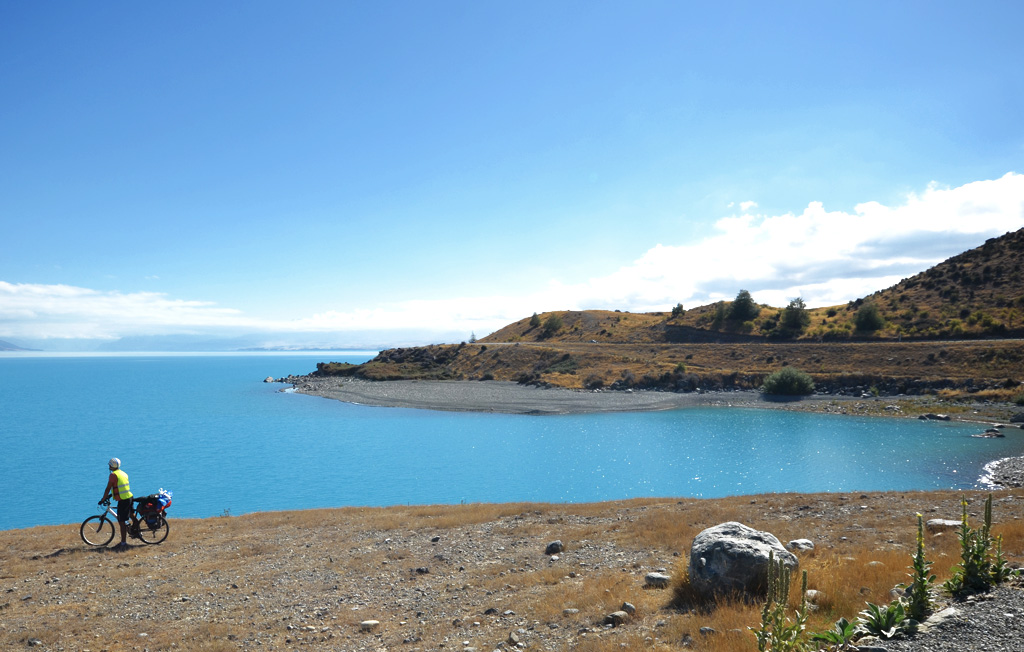 Shot of me after four days cycling from Christchurch
Shot of me after four days cycling from Christchurch
Which kind of bike?
A road bike is a light and fast option that will work well if your plan is mostly to stick to pavement. If you are thinking to go once around without venturing off to more mountainous trails, this type of bike will win you a lot of kilometers each day. The tires on these bikes are very thin, so have your spare tubes or repair kit handy.
Touring bikes are a bit more sturdy and give you flexibility on different terrain. You won’t get the lightning speed of a road bike, but if you're touring, you probably got a lot of gear weighing you down anyway. One advantage of a touring bicycle is that they have a longer wheelbase which makes cruising more comfortable.
Mountain bikes are much heavier and slower, but what they lack in speed, they make up for in durability. Mountain bikes are also great for ascending steep hills due to the range of gears. And it goes without saying in New Zealand you may face a hill or two. Also, you'll get a lot of maneuverability when you are getting through more rough and windy trails.
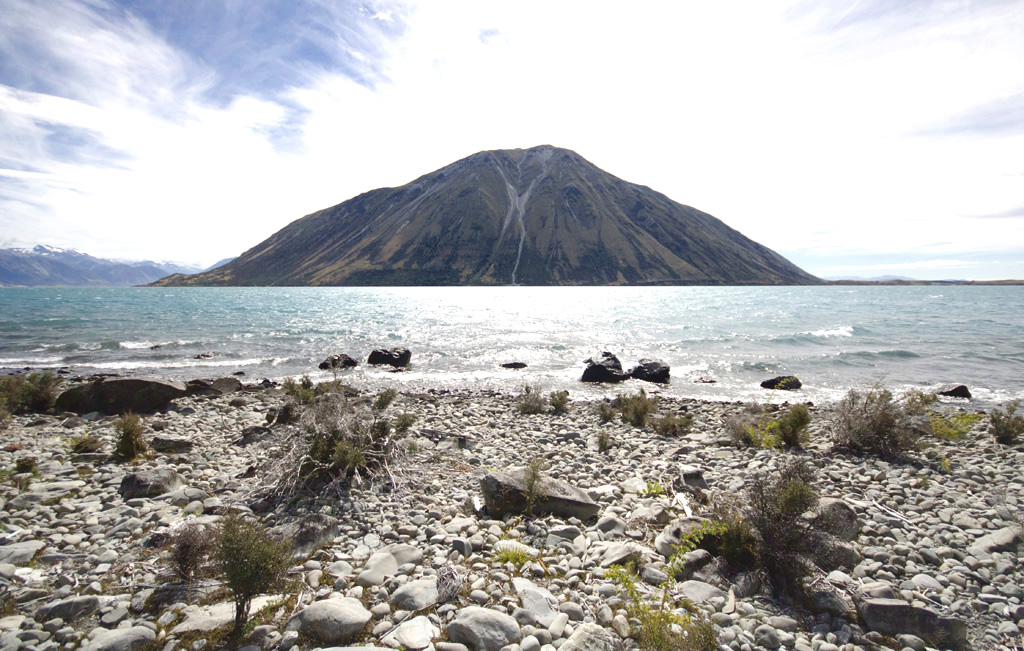 View along the Alps to Ocean Cycling Trail near Lake Ohau
View along the Alps to Ocean Cycling Trail near Lake Ohau
What Kind of Gear Will You Need?
Pannier bags - If there is any single gear you don't want to compromise on in terms of quality, its pannier bags. Having cheap pannier bags that aren't really waterproof will really set yourself up for a lot of unnecessary misery.
Tent - Lightweight is what you're looking for here. Quick set-up will also be a Godsend after some of the more rough days when you arrive to a campsite late and exhausted. Also, something that's sturdy enough to keep you dry if it ever gets extremely windy and rainy.
Rain jacket and pants - There will be rain.
Reflective jacket - As amazing of a job the New Zealand government has done to create great biking trails, expect several stretches where you'll be sharing space with cars and trucks. You'll want them to see you.
The Other Essentials: Helmet, lights, maps, repair kit, tools, spare tube.
Where to Sleep
One of the best places to camp is at one of the many Department of Conservation (DOC) camp sites. They are very cheap and sometimes even free. Before you begin your journey, see if you can stop by a DOC office and grab a map or booklet of all the campsite locations.
Warmshowers.com. This is basically the equivalent to Couchsurfing in the bicycle touring world. An online gathering place to find fellow cyclists generous enough to help other cyclists that have shower and accommodation needs.
Of course hotels, hostels and private campgrounds are always an option.
Or just set up tent anywhere. I am certainly not advising anyone to do anything illegal and fine worthy by pitching up a tent somewhere you're not officially supposed to. But I'm also not, not saying that. In fact, Yours Truly may or may not have done that practically every night for 2 months without a single problem. Just be aware that you could be hit with a $400 fine if you do it without using any common sense; out of sight, out of mind, as the saying goes. So in other words, you're not doing yourself any favors by setting up tent next to a busy road, sleeping in until the afternoon with camp gear scattered all around. Another option that will guarantee a fine free night is ringing on a local Kiwi's door, sharing all about your incredible bicycle tour and asking if they mind if you set up in their yard for the night.
Bicycle Trails to Experience on the South Island
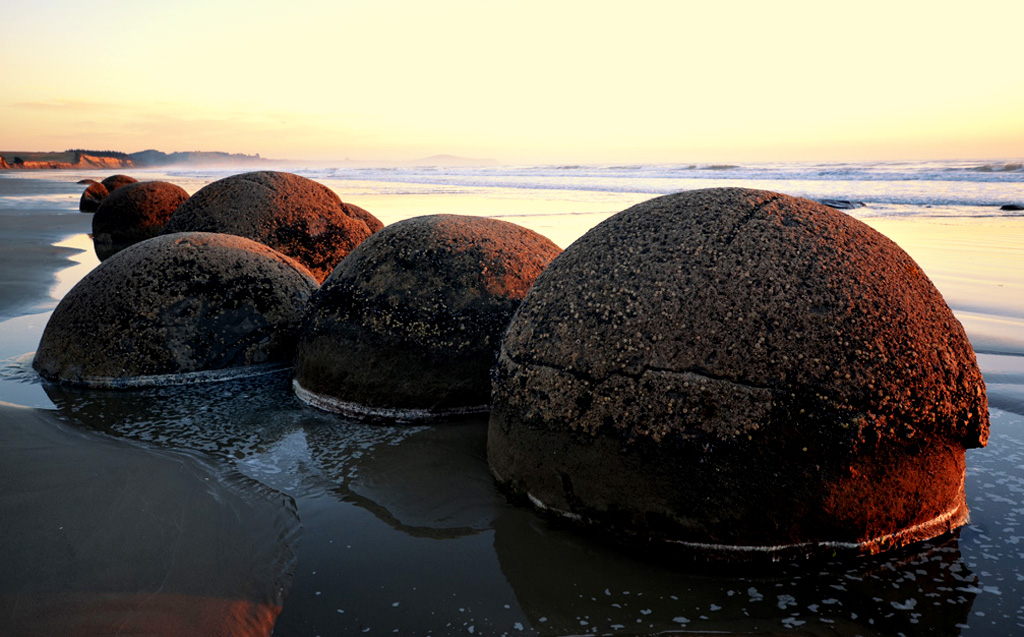 The Moeraki Boulders are just a day's bicycle ride south of the Alps to Ocean Trail ending.
The Moeraki Boulders are just a day's bicycle ride south of the Alps to Ocean Trail ending.
Alps to Ocean Trail
Climbing up to the start of this trail from Christchurch was a struggle, I won't lie. Having just started out the journey, every morning was a new surprise of sore muscles. It took a few full days riding until reaching the 700m elevation where the Alps to Ocean Trail begins.
Once you arrive, you'll be greeted by one of the most beautiful lakes in the world, Lake Tekapo, which is light Turquoise in color, with an amazing backdrop of the Southern Alps.
The entire trail takes about 5 days to complete. It is the longest bicycle trail in New Zealand and I would go ahead and say it's the crown jewel of all the trails. It even has its own website advertising all the blue penguins, elephant rocks, limestone cliffs, vineyards, and native beech forests that you'll see.
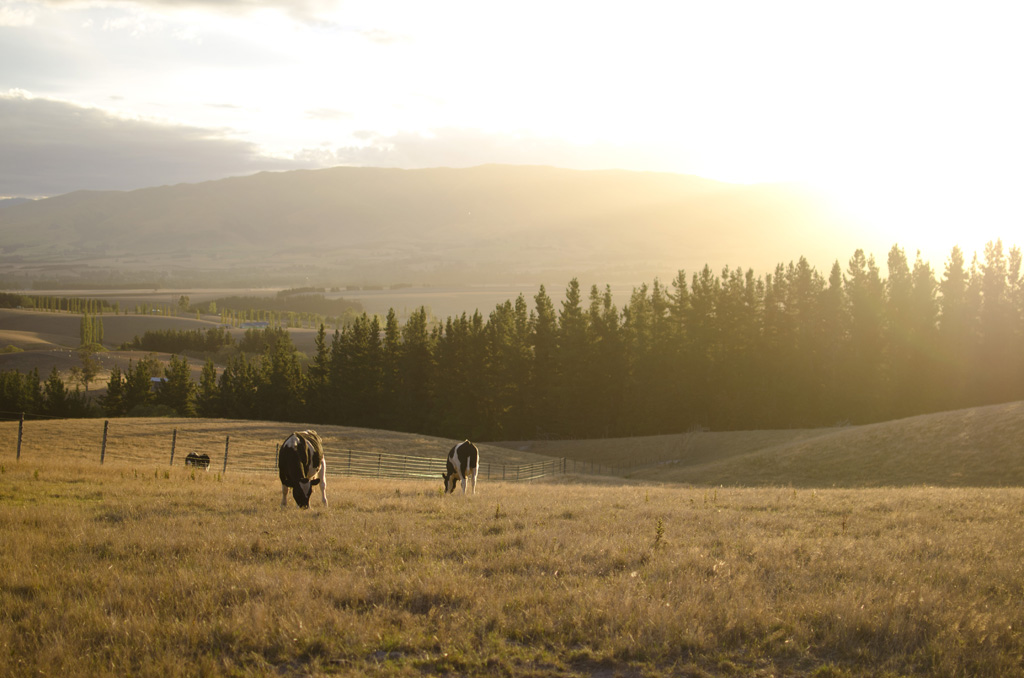 The New Zealand countryside is very wet or dry depending on which part of the island you are.
The New Zealand countryside is very wet or dry depending on which part of the island you are.
Otago Central Rail Trail
Of all the trails, this is probably the easiest one to tackle. The inclines are all reasonable, which makes sense given the bicycle trail itself replaces a former rail line that is no longer in service.
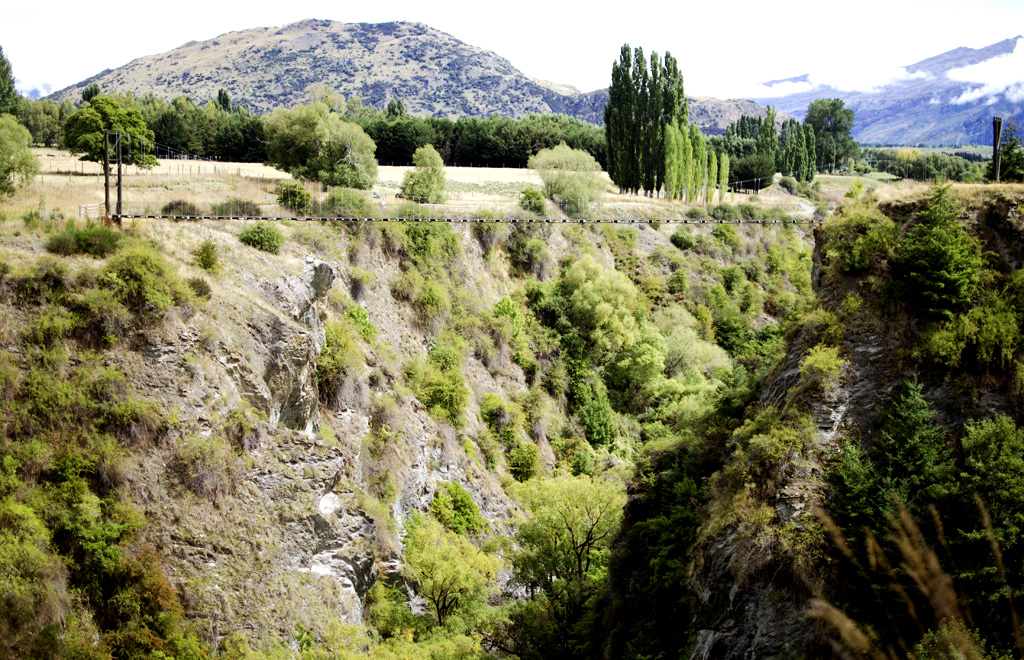 Suspension bridge near Queenstown.
Suspension bridge near Queenstown.
The Queenstown Trail
This trail circles around the Queenstown area alongside beautiful lakes and through small charming towns like Arrowtown that are great places to stop for a coffee or glass of wine. Nothing particularly mind blowing here, but overall I'd say it was one of the most aesthetically pleasing trails overall. Very green, and the combination of lakes and hills makes the entire ride an enjoyable one to take in.
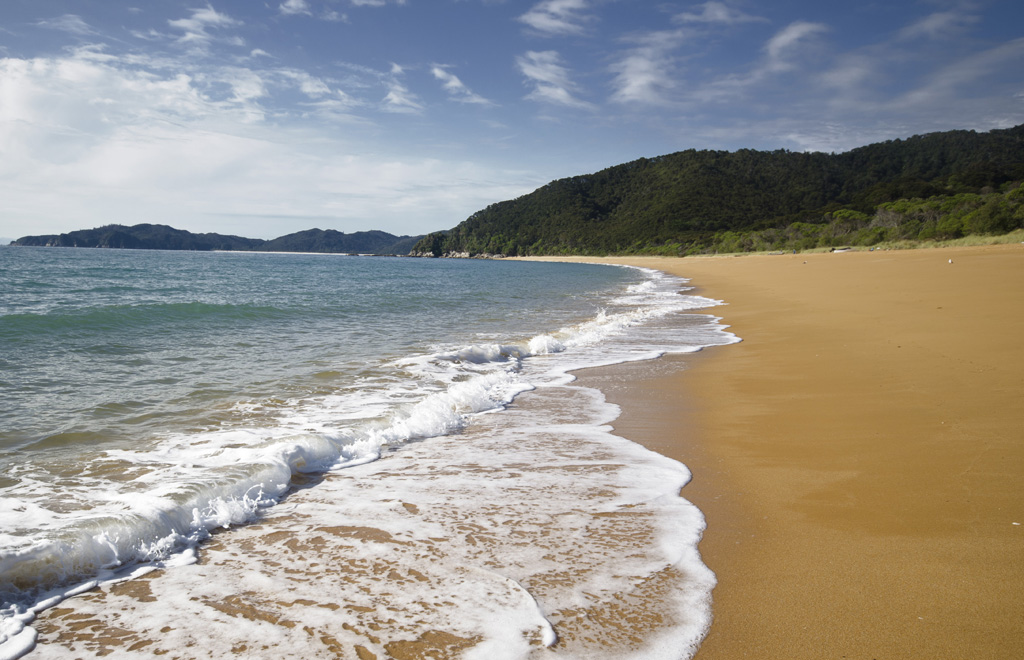 Beach near Abel Tasman National Park
Beach near Abel Tasman National Park
Great Taste Trail
As the name suggests, this is an excellent trail to explore areas of the palette. Apart from the restaurant establishments that you can choose from, organic and natural food is everywhere in this region. Raw milk is on offer. Apple trees are scattered around waiting to be picked. Small trust boxes and stands with organically grown and locally sourced food can be picked up on the cheap.
The one thing I would recommend is to not stop once you reach the official trail ending point. I'd recommend continuing your ride all the way to the Golden Coast, although this will require going over one of the most challenging hills you will ever face. Tanaka Hill is a 700 meter straight ascent. Took an entire day for me to climb, but the feeling of achievement upon reaching the top was remarkable. And wow, the ride that follows! Basically an endless downhill experience of nirvana that will make you love cycling again, erasing any bad feelings that may have arose during the grueling climb that came before it.
After you conquer Tanaka Hill, it's an easy ride all the way to Abel Tasman National Park. You can go through a sizable part of the national park all the way until you reach a campsite area that's called Totaranui. From there you can take a boat shuttle that connects to Kaiteriteri, a seaside town located near the end of the Great Taste Trail, effectively making Tanaka Hill a one-time climb. Make sure to organize your boat shuttle ahead of time.
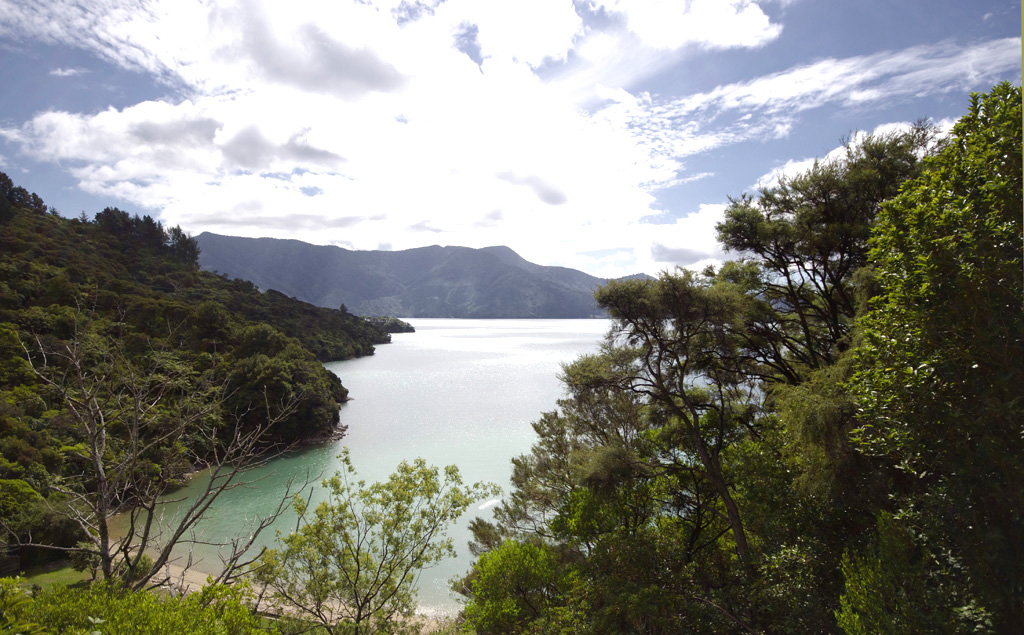 View from atop a hill in the Queen Charlotte Sound
View from atop a hill in the Queen Charlotte Sound
Queen Charlotte Track
This is a newly christened bicycle trail that was initially intended as a walking trail through the Queen Charlotte Sounds. As such, it is a far cry from the smooth and flat rides you'll find on the Ottago Central Rail Trail. This is the type of terrain you want to do with a mountain bike and no heavy gear if possible. The steep climbs and drops, as well as rocky, swerving trail will require full concentration to maneuver. Certainly a lot of fun and the views are amazing. Just be careful. If you're not completely focused or get a little too into it without the matching mountain bike experience, you may end up in a similar sad state that I myself did; falling over into a ditch, ripped clothing, injured wrist, but most of all, a very shattered ego.


